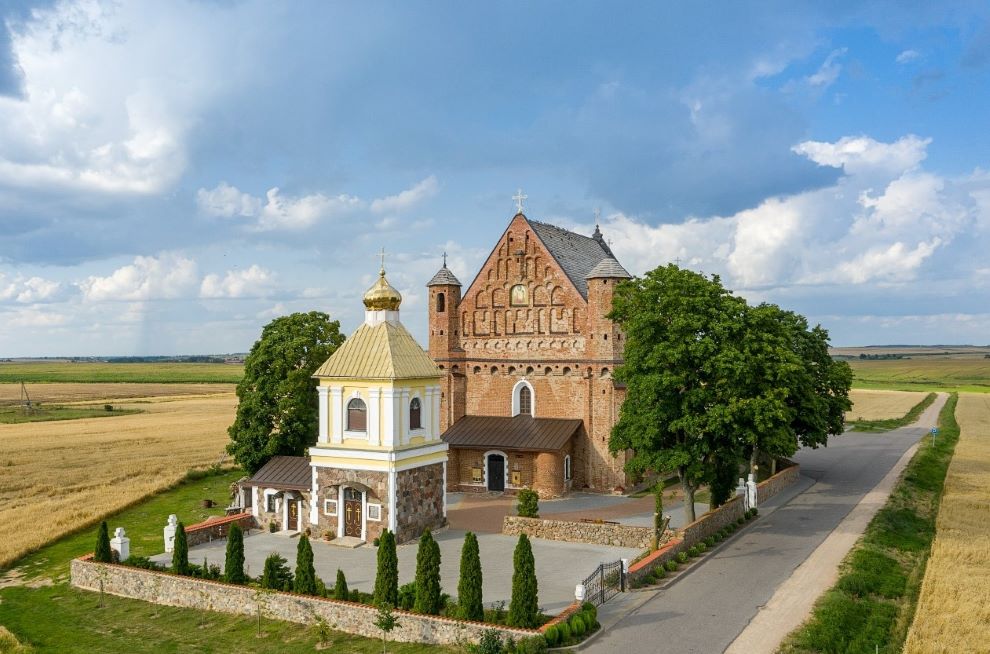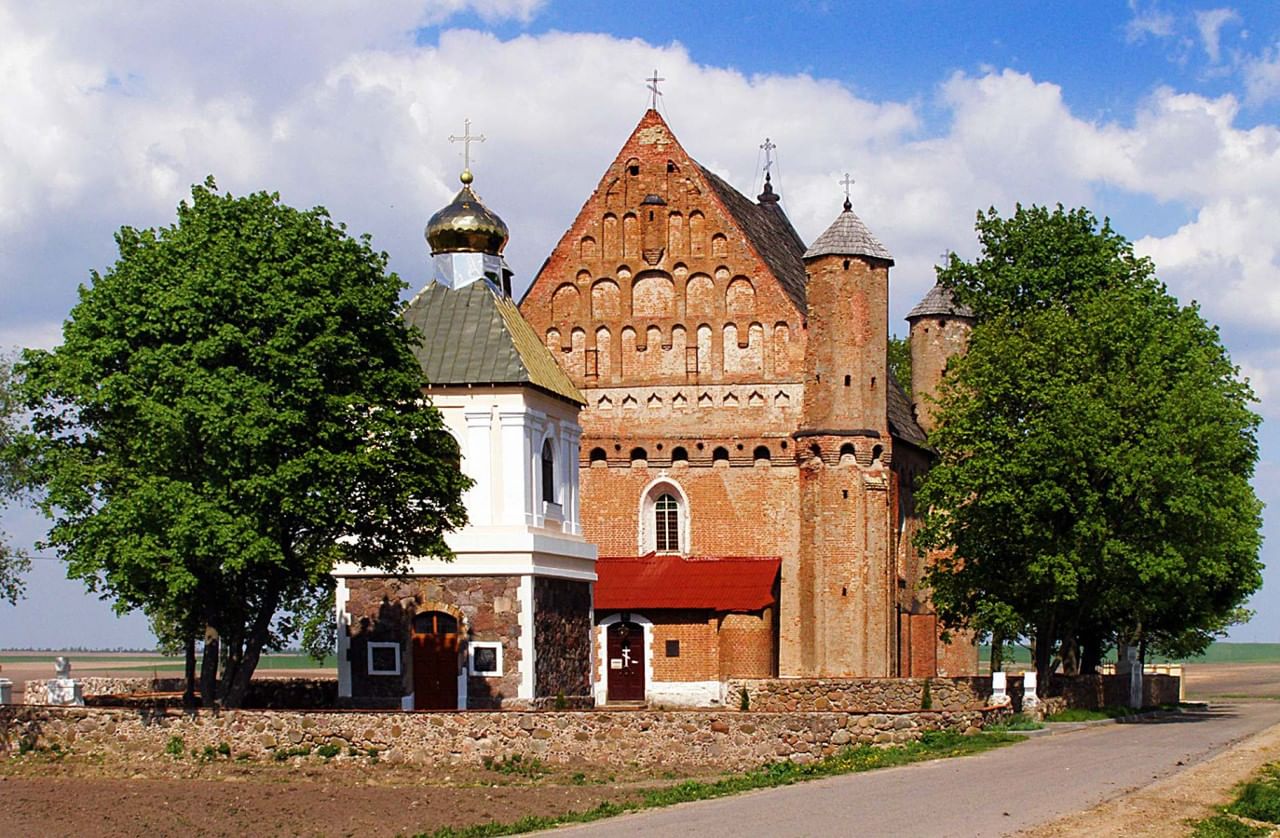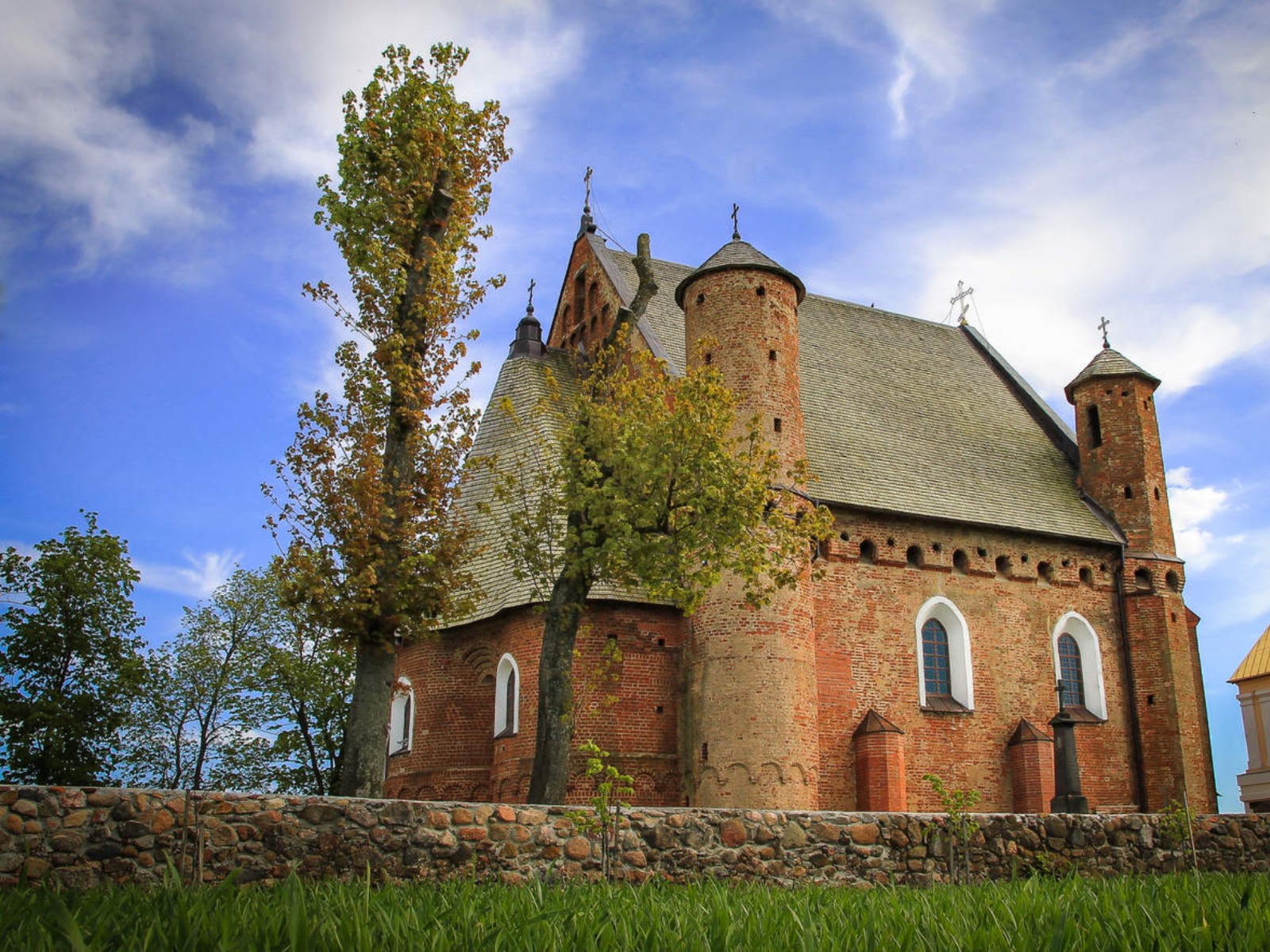Regarding the date of the church's construction, there are different versions. According to the first, it was created thanks to Duke Vytautas. The Duke donated funds for the construction in gratitude that the walls of the church, which was previously located here, protected him from the threat coming from his cousin Jagiello. In 1407, the reconstructed building was consecrated with the participation of Vytautas. Another version states that the site of the Synkavichy church was not a church, but a castle, which by the beginning of the 15th century had turned into ruins. On its site, Vytautas ordered the construction of a fortified church with corner towers.

Yet another version asserts that the structure was erected in the first half of the 16th century on the initiative of the great Lithuanian hetman Konstantin Ostrozsky. However, recent historical findings, discovered during the restoration, suggest that the church may be older and the construction date should be considered 1320.
History and architecture of the building
The Church of the Holy Archangel Michael is a rare example of a fortress-church for our country. The second similar structure can be seen in the village of Muravanka in the Grodno region. The architecture of the Synkavichy Church combines elements of medieval Gothic, Renaissance, Romanesque style, and ancient Russian cult architecture. The one-and-a-half meter thick walls, embrasures, towers located at the corners, give the building a resemblance to a defensive castle. The basis of the composition is a three-nave six-column basilica.

Originally the church was Orthodox, but at the end of the 16th century it became Uniate. After the territory became part of the Russian Empire, the church returned to the Orthodox believers. In the late 19th century, a restoration was carried out in the building and a bell tower was built nearby. The church was attended by parishioners until 1959, after which it was closed. During the Soviet years, the building was used for storing vegetables. In 1991, the church was reopened for Orthodox believers. By now, thanks to the efforts of patrons and local parishioners, the roof of the building has been replaced, the walls have been restored, and the surrounding area has been beautified. Services, church rituals, and Orthodox holidays are observed here.
What is interesting about the church in Synkavichy and how to get there?
Belarusian and foreign travelers will definitely be interested in:
- Unusual defensive architecture for a church: a double-pitched roof covered with shingle, Gothic arches, crenellated cornices, whitened niches of the facades, and the interior decoration. The structure impresses with its beauty and grandeur.
- A revered Christian shrine. The church houses the icon of the Mother of God "Queen of All", which is attributed with miraculous properties. Believers affirm that sincere prayers directed at the icon help to heal from illnesses, get rid of harmful dependencies, and believe in miracles.
- Attending the divine service. In the church, you can pray on your own, order a prayer service, draw holy water from the spring. The doors of the Church of the Holy Archangel Michael are open daily, but services are held only on weekends and holidays. Prayers in front of the icon of the Mother of God "Queen of All" are held every first Friday and third Saturday of the month.
- The opportunity to listen to the bell ringing. Specifically for the church, 5 bells were cast, the harmonious sound of which creates a unique atmosphere in the area.

To get to Synkavichy from Minsk, you need to head towards Baranovichi, follow the R-99 road to Slonim, continue on the same road, and turn near the sign to Synkavichy.
Visiting the Church of the Holy Archangel Michael gives an opportunity to immerse oneself in the history of Orthodox culture, to experience inner peace and tranquility, and to feel the spirit of the past.